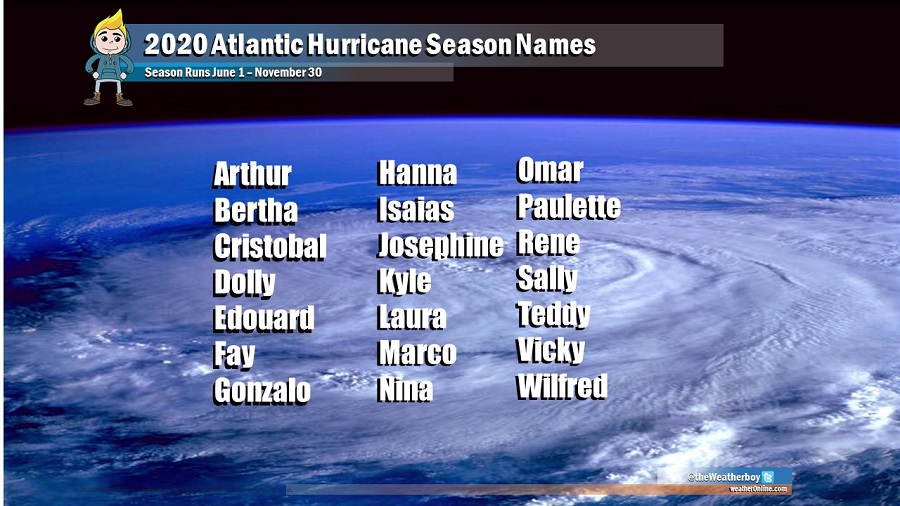
With the 2020 Atlantic Hurricane Season approaching on June 1, the list of names that will be used for storms this year is being promoted to increase awareness of the upcoming season. This week, Dr. Phil Klotzbach from Colorado State University, unveiled their 2020 Atlantic seasonal outlook which calls for an above normal amount of tropical storms, hurricanes, and major hurricanes and above-normal odds of landfall around the U.S. East Coast, Gulf Coast, and Florida coast.
The names to be used this year are:
- Arthur
- Bertha
- Cristobal
- Dolly
- Edouard
- Fay
- Gonzalo
- Hanna
- Isaias
- Josephine
- Kyle
- Laura
- Marco
- Nana
- Omar
- Paulette
- Rene
- Sally
- Teddy
- Vicky
- Wilfred
The list of names are maintained by the United Nation’s World Meteorological Organization (WMO). Currently, only tropical cyclones are named in an official capacity; winter storms are not. The World Meteorological Organization from the United Nations develops a list of names for each ocean basin. In the United States, the National Hurricane Center maintains lists from the WMO for Atlantic Basin and eastern Pacific basin storms. Storms that form near Hawaii come from a list managed by the Central Pacific Hurricane Center.
Storms are named in alphabetical order each season. “It is important to note that tropical cyclones/hurricanes are named neither after any particular person, nor with any preference in alphabetical sequence,” states the WMO. “The tropical cyclone/hurricane names selected are those that are familiar to the people in each region.”
Storms responsible for significant death/destruction are retired at annual WMO meetings. This is why there will never be another Katrina, Sandy, or Andrew. The WMO selects new names each year to replace the retired names. Otherwise, storm names are recycled every 6 years.
If a storm forms in the off-season, it will take the next name in the list based on the current calendar date. For example, if a tropical cyclone formed on December 28th, it would take the name from the previous season’s list of names. If a storm formed in February, it would be named from the subsequent season’s list of names.
In the event that more than twenty-one named tropical cyclones occur in the Atlantic basin in a season, additional storms will take names from the Greek alphabet.